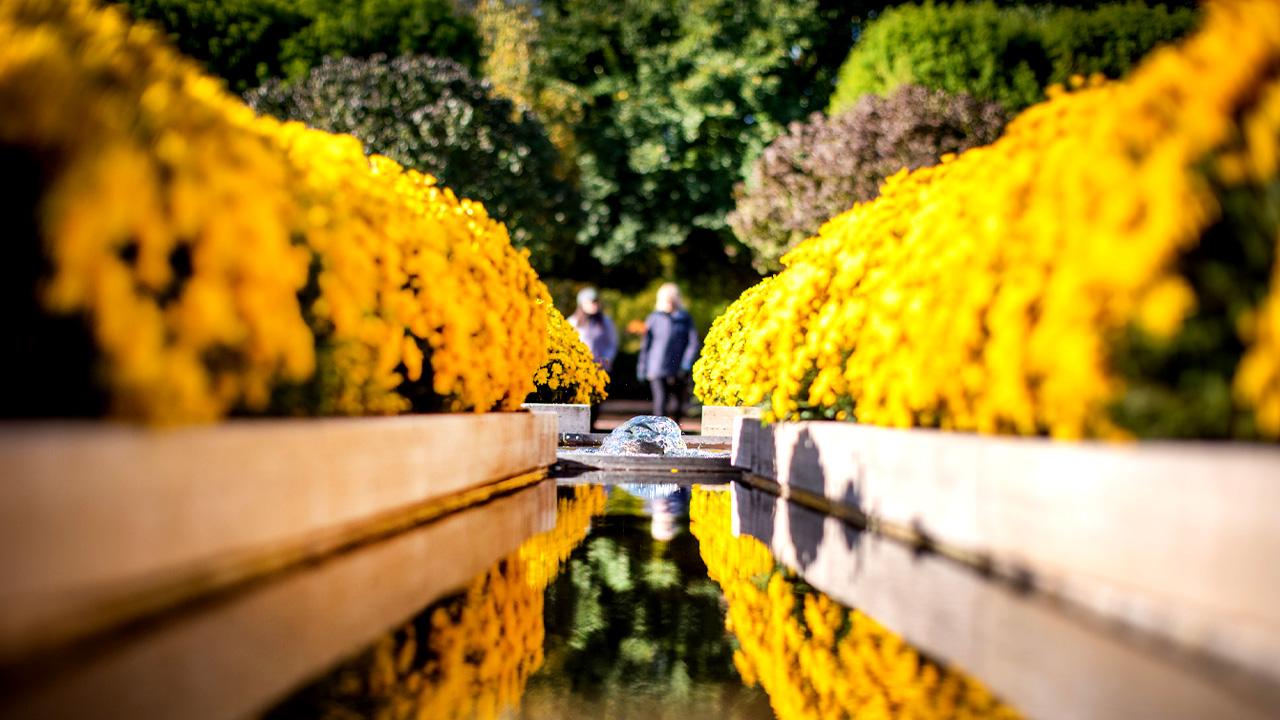

News
Garden Stories
The sweetness of summer solitude
Summer is a social time, filled with friends, family, and sunshine—but what if you want to slip away on your own?
A growing body of research shows that solo trips outside, away from your everyday life, can calm the mind and allow you to de-stress. We’ve got tips on how to find moments of peace and self-reflection at the Chicago Botanic Garden this summer—in the music of a historic violin, the grace of old bonsai, the art of a Japanese dry garden (karesansui).
“Ah! I need solitude. I have come forth to this hill at sunset to see the forms of the mountains in the horizon — to behold and commune with something grander than man."
—Henry David Thoreau, writer and naturalist (1817–1862)
Alone with your thoughts

Daniel F. and Ada L. Rice Plant Conservation Science Center Green Roof Garden

To get away from it all, head to our Green Roof Garden on the Daniel F. and Ada L. Rice Plant Conservation Science Center.
In the rooftop garden, you can sit on a bench to read, to write, to live in the moment. Take in the scent of chamomile and catmint, and the still of the lake below, surrounded by weeping willows and cottonwoods. “It's really peaceful up here,” said Jamie Berlin, the garden’s horticulturist.
You’ll find another quiet spot in the meadow west of Evening Island at The Rookery, a grand art installation made of willow saplings.
Take a break on the love seat—one of eight at the Garden as part of our summer celebration Love in Bloom; look for nature-based poetry on each tête-à-tête bench. As you settle in at The Rookery, treat yourself to a lyrical reading of “Ozaagi’aan One Open to an Other” in English and Ojibwe; an excerpt is printed on the love seat.
Recording courtesy of Margaret Noodin, Ph.D.
Noodin reads her poem “Ozaagi’aan One Open to an Other”. Dr. Noodin is a professor at the University of Wisconsin-Milwaukee and author of two collections of bilingual poetry: Weweni and Gijigijigikendan: What the Chickadee Knows.
Gardens for Peace
Last year’s Gardens for Peace raking at the Malott Japanese Garden. Video courtesy of Olivia Smith
August 7 – 31, Garden hours
Volunteer hours for cranes (if available):
Weekdays, 11–3 p.m.; Weekends, 11–4 p.m.
Elizabeth Hubert Malott Japanese Garden
Free with Garden admission
To calm your mind, simply walk over the arched bridge to the Malott Japanese Garden, a place that evokes harmony and balance. This year, the dry garden is taking on special significance, as part of a national project to promote peace.
Just as you might see in a museum piece, there is art and meaning in the raked pattern of the gravel, a rendering of the Japanese word for peace, heiwa. The pattern was designed by enamel artist Toshiko Tanaka, a survivor of the atomic bomb in Hiroshima.
“The idea behind it reminds us how precious peace is for all humanity,” said Ayse Pogue, the Japanese Garden’s senior horticulturist.
Tanaka created the pattern as part of the North American Japanese Garden Association’s Gardens for Peace project, bringing communities together to promote peace. As part of the effort at the Malott Japanese Garden, volunteers will hand out origami paper cranes, a symbol of peace.
Other ways to reflect on your own
Take a break at the Mid-American Bonsai Show & Sale and Violins of Hope.

